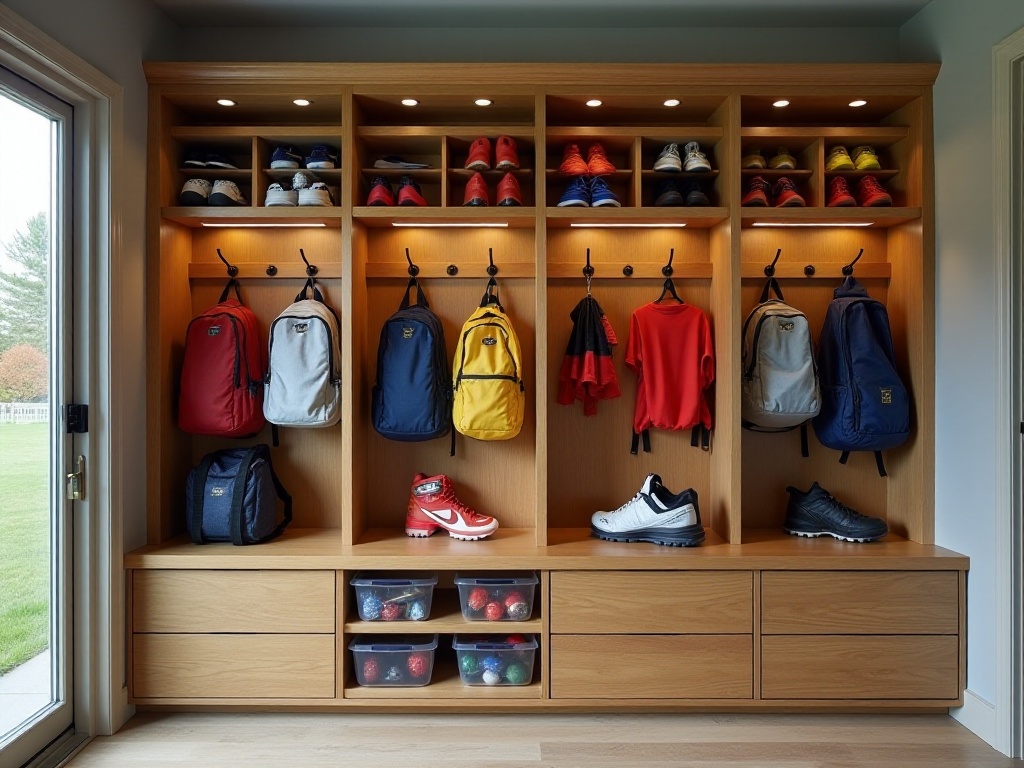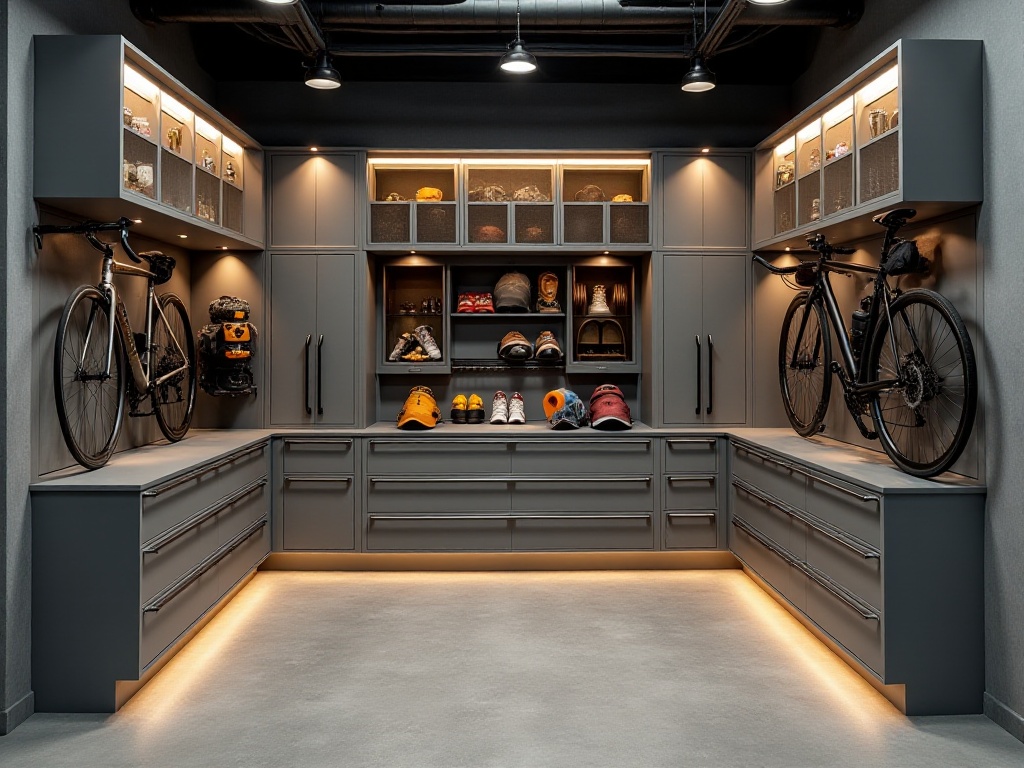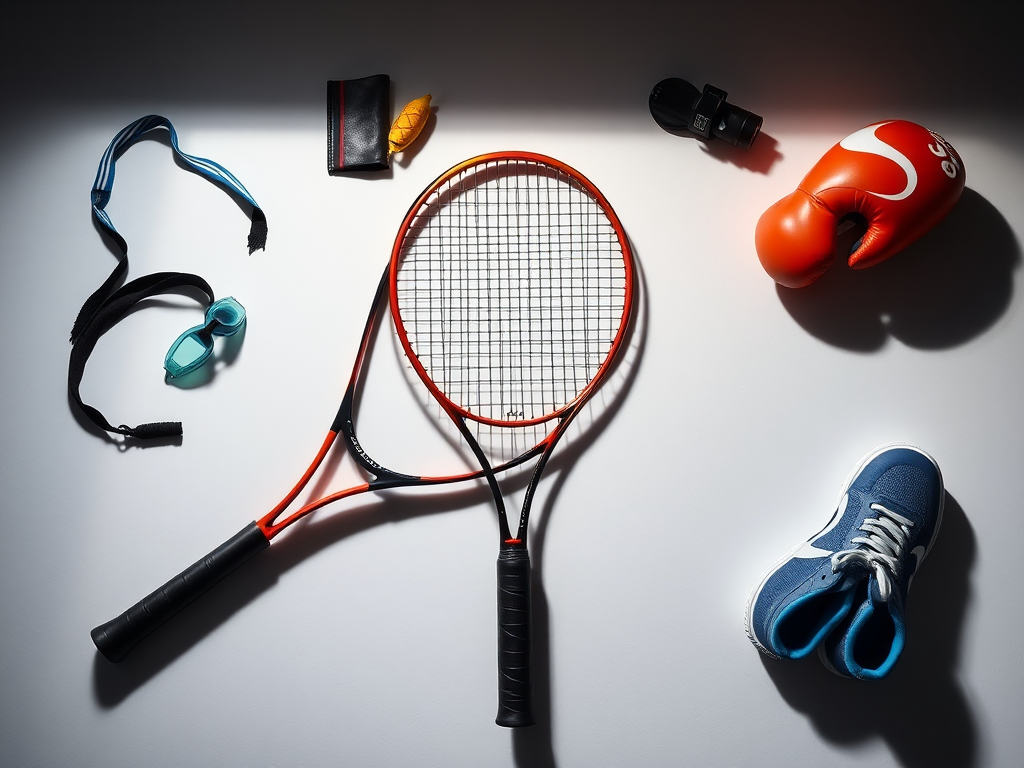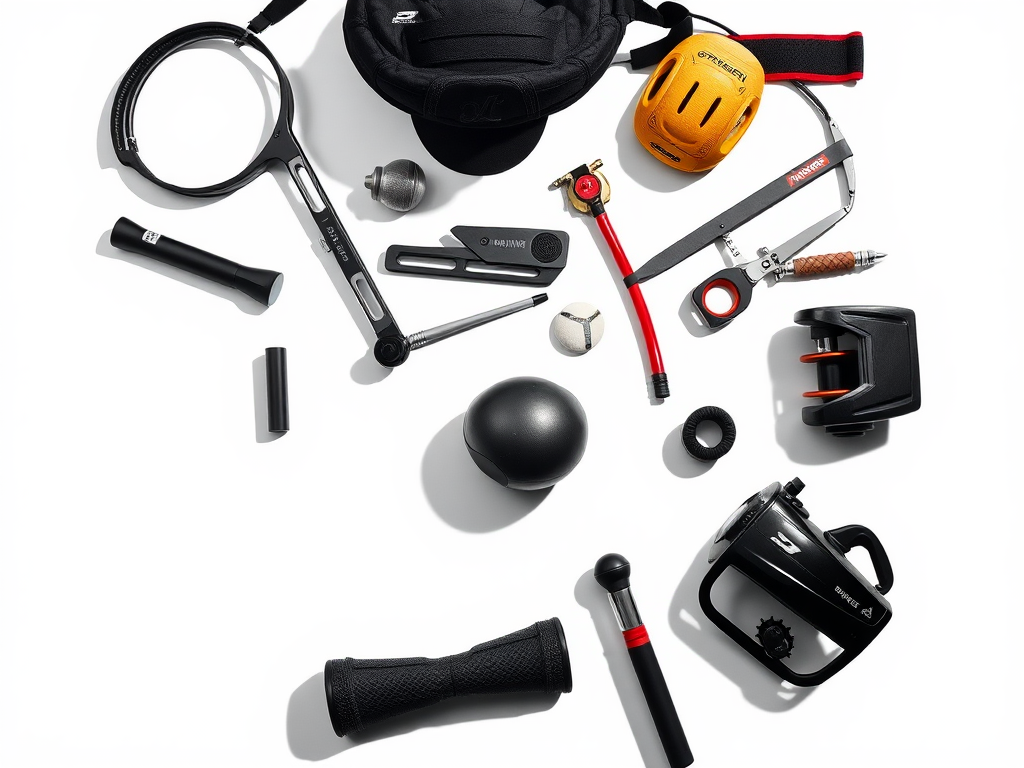Introduction
It's really challenging! As a working professional obsessed with sports, I have an overwhelming amount of sports equipment at home. Tennis rackets, basketballs, yoga mats, treadmill, along with various sportswear and protective gear are scattered everywhere. Every time I head out to exercise, just finding the equipment can be frustrating. There was one time when I had planned to play tennis with a friend, but it took me so long to find my racket that I arrived twenty minutes late to the court, and my friend was almost falling asleep waiting.
Since then, I've been determined to organize all my sports equipment properly. After years of exploration and trial, I finally found a storage system that works for me. Today, I'd like to share my experience and insights, hoping to help fellow sports enthusiasts who are also struggling with clutter.
Mobile Storage
When it comes to mobile storage, it's truly the most crucial aspect of organizing sports equipment. Imagine spending ages rummaging through your garage and trunk to find the equipment you need before meeting friends for a game - it's absolutely frustrating. Therefore, a good mobile storage solution is key to improving your quality of life.
During last year's Singles' Day sale, I found an amazing foldable storage box that seems custom-made for sports enthusiasts. The box's greatest feature is its versatility. First, it has a dedicated insulated layer for sports drinks and energy bars, so you don't have to worry about drinks getting warm during summer workouts. Second, its dividers are adjustable, perfect for storing both large items like tennis rackets and small items like wristbands and knee pads. Most importantly, it can be folded when not in use, taking up minimal space in the trunk without interfering with other items.
Besides the storage box, I also got a specialized sports bag rack. This rack can be mounted on the garage wall and holds six to seven sports bags simultaneously, so you no longer have to worry about bags being scattered around. Each bag is labeled, such as "Tennis Equipment," "Basketball Equipment," "Swimming Equipment," etc., making it easy to find what you need at a glance.
For clothing storage, I now use a drawer-based classification system. The system's main feature is its transparent drawers, each with a dedicated label space. I organize different sportswear by category - running clothes in one drawer, team uniforms in another, swimwear in yet another. Within each drawer, I use adjustable bamboo dividers for further organization, separating long-sleeve from short-sleeve items, and pants from shorts. This way, I can find the clothes I want quickly, even when groggy in the morning.
Oh, and here's a particularly useful tip: keep a set of basic equipment in each sports bag. For example, my tennis bag always has a spare set of sportswear, a towel, and a water bottle. This way, even if you suddenly decide to exercise, you won't have to scramble around looking for things.

Fixed Systems
When it comes to fixed storage systems at home, it really gave me a headache. Especially at first, various pieces of sports equipment were just thrown into corners, not only looking messy but also making it difficult to find things. Later, I discovered that walls and ceilings are actually the key areas for storage - these often-overlooked spaces are great storage helpers.
I installed a super practical hook system on my garage wall. The best thing about this system is its flexibility - the hooks can be adjusted as needed. Lighter equipment like tennis and badminton rackets hang at the top, while heavier items like baseball bats and golf clubs hang at the bottom. Each hook has a small label showing the equipment name, making everything easy to find.
I also installed a track system on the ceiling for hanging larger, less frequently used equipment like kayaks and surfboards. The biggest advantage of this system is that it keeps these space-consuming items stored away until needed, perfect for homes with limited space.
Bicycle storage was truly a headache. Bikes take up space and can't be stored carelessly without getting scratched. I tried many solutions, like laying them flat or at an angle, but none were ideal. Finally, I discovered that vertical storage was the best option. I now use a wall-mounted rack that holds bikes vertically. This rack is not only sturdy but also has protective padding to prevent scratches. Most importantly, storing bikes vertically saves space and looks quite artistic.
For smaller equipment like dumbbells and yoga balls, I bought a storage rack with wheels. This rack has two levels - frequently used equipment on top and less used items below. When needed, I just roll the rack over, and when done, roll it back - super convenient.
Space Techniques
When it comes to storage techniques, making the most of available space is crucial. For example, I made a super useful ball storage rack. The construction is simple - just a wooden frame with elastic cords forming a grid. This keeps basketballs, soccer balls, and volleyballs securely in place without rolling around. I intentionally designed the rack's height to double as a bench, perfectly combining storage and functionality.
Corner space utilization is also key. Many people overlook corners, thinking they're unusable. Actually, corners are perfect for storage. I installed a row of S-hooks in my storage room corners for hanging various sports bags and helmets. These seemingly useless spaces can be put to great use. Plus, items in corners are less likely to get bumped and don't affect the room's overall appearance.
The space behind doors is often overlooked too. I installed a multi-tier storage rack behind my storage room door, specifically for small sports equipment like wristbands, knee pads, and headbands. This keeps these small items from being scattered around and makes them easy to find.
The space under windowsills can also be utilized well. I built a long storage cabinet under the windowsill specifically for yoga and exercise mats. This not only maximizes space usage but also keeps these mats neatly arranged, creating a pleasing appearance.
Classification Management
Managing sports equipment classification is truly an art. At first, I just threw everything together, which meant rummaging through everything to find what I needed. Finally, I realized I needed to establish a scientific classification system.
I recommend organizing by sport. For example, the soccer area is dedicated to soccer balls, goals, and cones; the basketball area is for basketballs, pumps, and wristbands; the tennis area holds rackets, balls, and grip tape. The biggest advantage of this classification method is its intuitive nature, making it very clear where to find things.
Within each area, I further subdivide. Frequently used equipment goes in easily accessible spots, while less used items go in the back. I also arrange items by size, with larger items below and smaller ones above, making everything look neat and easy to access.
To make the classification clearer, I labeled each area. I use erasable chalkboard labels, so I can modify the classification system as needed. I also note the quantity of each piece of equipment on the labels, so I always know what needs to be replenished.
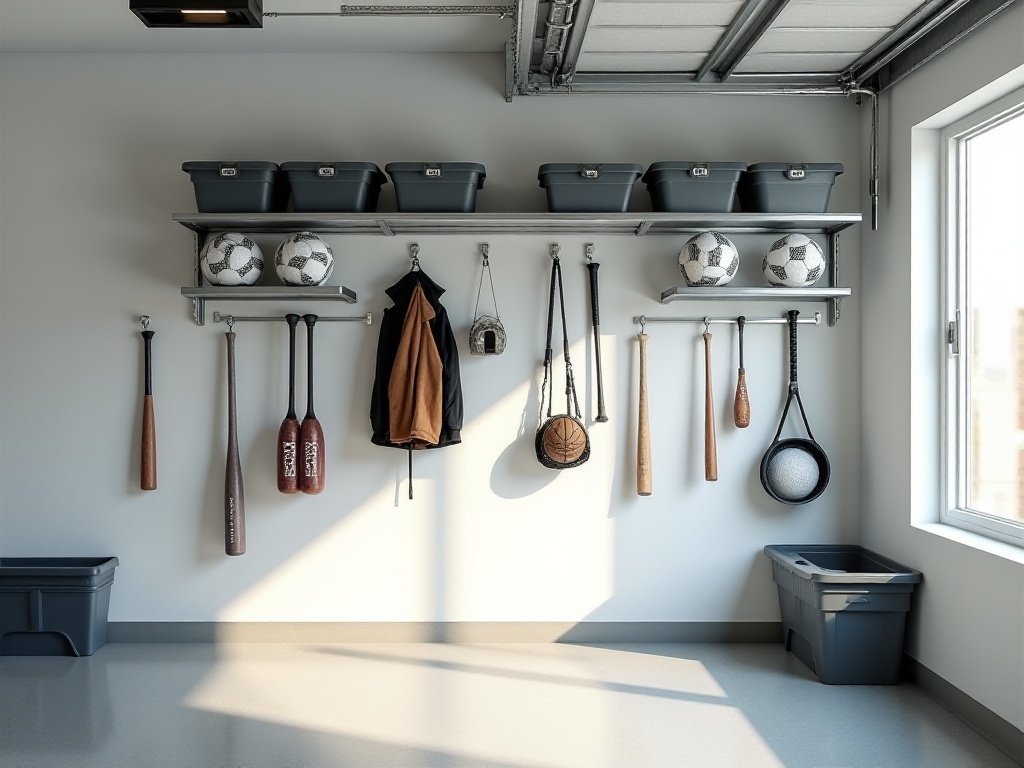
Regular Organization
Regular organization is an extremely important but often overlooked aspect. Many people think storage is a one-time thing - once organized, it's done. Actually, without regular organization, any storage system will quickly become chaotic.
I've developed a habit of spending one weekend each month organizing my sports equipment. During organization, I take out all equipment for inspection. First is cleaning, carefully wiping down each piece of equipment, especially dusty corners. Then comes inspection, checking for items that need repair or replacement. For example, checking if tennis racket strings are loose, if shoe soles are worn, or if protective gear is damaged.
During organization, I also reassess how frequently each piece of equipment is used. If I find items that haven't been used for a long time, I consider disposing of them. After all, it's better to leave space for equipment that's actually needed rather than keeping unused items.
For seasonal sports equipment, I prepare a dedicated storage box. For example, winter skiing equipment can be stored away during summer, while summer surfboards can be packed away during winter. This not only saves space but also better protects the equipment.
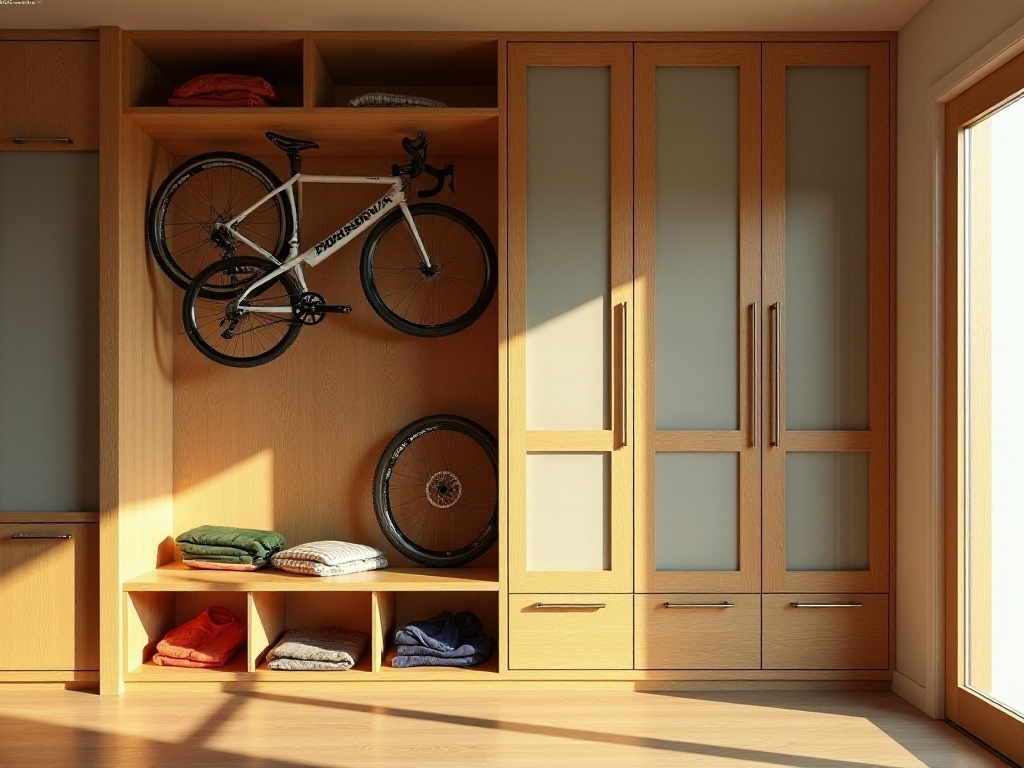
Conclusion
After years of exploration and practice, I finally found a sports equipment storage system that works for me. Although the process requires some time and effort, the satisfaction of seeing all equipment neatly arranged in its proper place is indescribable.
Most importantly, a good storage system makes our sporting life more relaxed and enjoyable. No more worrying about finding equipment or whether it might get damaged - we can focus more energy on the sports themselves.
After sharing all this, I wonder if you have any unique storage tips? Or have you encountered any particular difficulties in organizing your equipment? Feel free to share and discuss in the comments section. Through everyone's wisdom, I'm sure we can find even more and better storage solutions. Let's work together to create a perfect sports equipment storage system!




